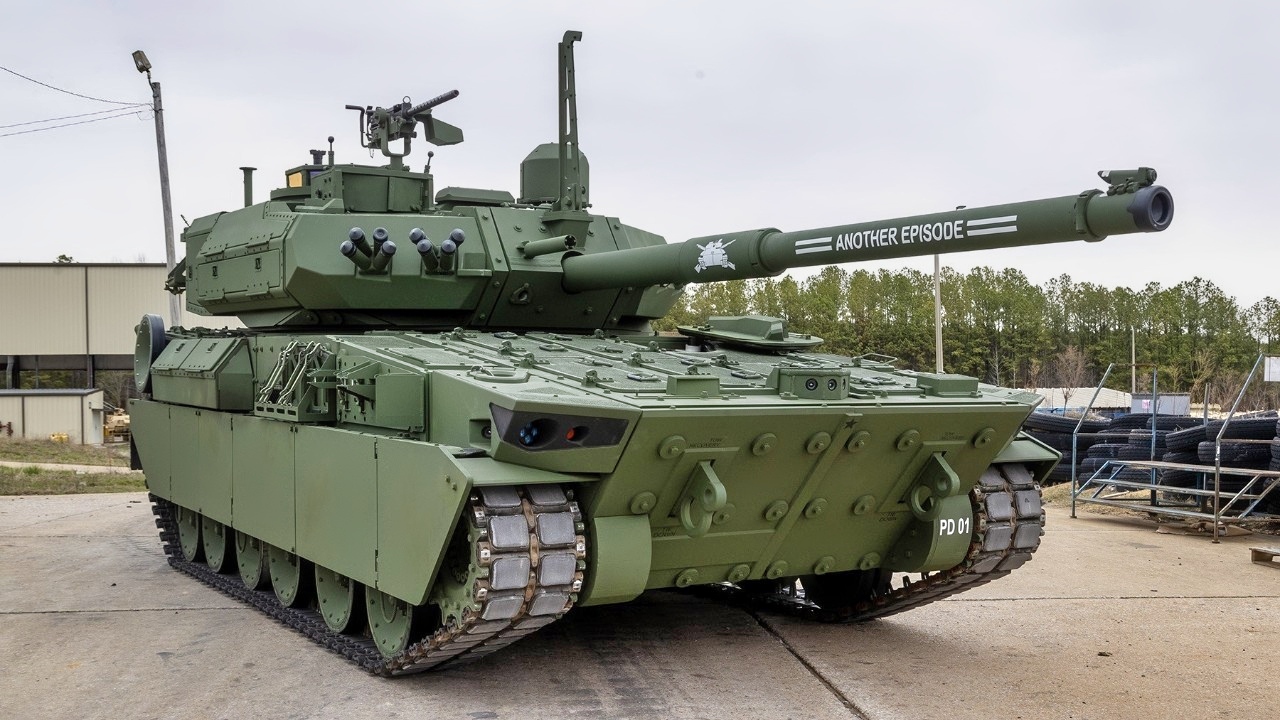Key Points and Summary – The U.S. Army’s M10 Booker was designed to be a light, air-droppable fire support vehicle for fast-moving infantry, filling a gap left by the heavy, hard-to-deploy M1 Abrams tank.
-However, the program collided with reality when the final vehicle proved too heavy to be airdropped as intended, with only one fitting on a C-17.

The M10 Booker Combat Vehicle proudly displays its namesake on the gun tube during the Army Birthday Festival at the National Museum of the U.S. Army, June 10, 2023. The M10 Booker Combat Vehicle is named after two American service members: Pvt. Robert D. Booker, who posthumously received the Medal of Honor for actions in World War II, and Staff Sgt. Stevon A. Booker, who posthumously received the Distinguished Service Cross for actions during Operation Iraqi Freedom. Their stories and actions articulate the Army’s need for the M10 Booker Combat Vehicle, an infantry assault vehicle that will provide protection and lethality to destroy threats like the ones that took the lives of these two Soldiers. (U.S. Army photo by Bernardo Fuller)
-This critical failure to meet its primary expeditionary requirement was a key reason for the program’s cancellation.
-The Army had, in the words of its own Secretary, created a “heavy tank” when it needed a light one.
The M10 Booker Failed for a Simple Reason: Weight
The U.S. Army’s M10 Booker was intended to bring lethality and firepower to an infantry brigade combat team in a way that heavier vehicles such as the 70-ton Abrams tank could not.
The Army wanted a high-speed armored vehicle that would be extremely lethal, but lighter than others of its kind.
The intent was to airdrop the M10 from cargo planes and use it to provide offensive fires for infantry on the move.
Lightweight was the key requirement—the M10 would fill a gap because the large Abrams tank is difficult to deploy and often cannot drive over bridges or narrowly configured areas.
While the Army did not want to call the Booker a “light tank,” it was designed to do what the Abrams tank could not.
The Abrams has trouble maneuvering with dismounted infantry, which often needs to move quickly through uneven terrain and condensed urban areas.
Apart from the high-speed, lethal maneuver, the M10 Booker was intended to align with the Army’s growing emphasis on expeditionary operations.
The Abrams has an enduring place in Army operations, but 70-ton tanks are tough to deploy.

M10 Booker. Image Credit: Creative Commons.
Abrams tanks often need to travel by boat and spend weeks staging on location for maintenance and logistical support.
The M10 Booker, on the other hand, would airdrop quickly from a C-17 cargo plane in support of fast-attacking infantry.
However, the Army’s ambitious vision for the M10 Booker wound up colliding with practical reality, and the final platform was too heavy to be airdropped.
This was completely at odds with the initial requirement for the vehicle, and the M10’s weight is cited as the main reason the vehicle was cancelled.
“We got a heavy tank,” Army Secretary Dan Driscoll was quoted saying in a report on ClearanceJobs.com
True Expeditionary Weapons for M10 Booker
Armored expeditionary tactics are increasingly critical as warfare becomes much faster, networked, and extends across multiple domains.
By deploying quickly, groups of M10 Bookers could have supported high-speed amphibious attacks into islands in the South China Sea or other heavily contested coastal areas.
The ability to airdrop from a cargo plane was a top priority for the Army. The Booker would have operated in close support of airborne operations, bringing organic heavy fire support to air-dropped forcible entry missions into enemy territory.
This is likely why the Army planned first to deploy the M10 Booker with the 82nd Airborne.
But the 38-ton M10 Booker was too heavy to air drop from a C-130, and only one could fit into a C-17.
Advancing infantry needs supportive fires to breach an enemy perimeter or advance into occupied urban areas.
In that regard, the M10 Booker was intended to address a growing tactical deficit. In the effort to make the vehicle survivable enough to be manned, however, the Booker simply got too heavy to align with its intended requirements.
Unmanned Vehicles
The rapid emergence of advanced, AI-enabled autonomy was also likely a key factor in backing out of the vehicle—its missions might instead be performed by an unmanned robotic vehicle that is much lighter, more deployable, networked, and capable of supporting larger manned platforms such as the Abrams.
The concept could be described as a ground version of the aerial loyal wingman drone.
Attritable, lightweight robotic vehicles could deliver suppressive fires and conduct forward attacks, as well as sling loads beneath a Chinook or C-130.
About the Author: Kris Osborn
Kris Osborn is the President of Warrior Maven – Center for Military Modernization. Osborn previously served at the Pentagon as a highly qualified expert in the Office of the Assistant Secretary of the Army—Acquisition, Logistics & Technology. Osborn has also worked as an anchor and on-air military specialist at national TV networks. He has appeared as a guest military expert on Fox News, MSNBC, The Military Channel, and The History Channel. He also has a Masters Degree in Comparative Literature from Columbia University.
More Military
The First 48 Hours of a War With China ‘Could Be Ugly’
Russia Tried to Build Their Very Own F-22 Raptor. Calling It a Disaster Would Be a Gift
The Royal Navy’s Queen Elizabeth-Class Aircraft Carriers Simply Summed Up in 4 Words










